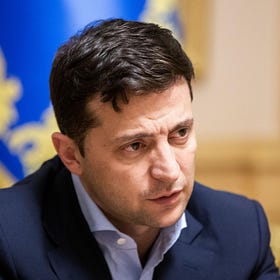Updated July 3, 2025
It’s been announced that the United States and Ukraine have signed a long-awaited minerals deal (not to be confused with the memorandum that was signed earlier). Ukraine supporters are understandably worried that the U.S. government will only extort Ukraine without giving anything in return, but Ukrainian officials have repeatedly refused to accept disadvantageous demands. Nevertheless, the false narratives of “Zelenskyy caved” or “Zelenskyy was bullied into signing a bad deal” have already started to spread.
The agreement to establish a Reconstruction Investment Fund was signed by Ukrainian Economy Minister Yulia Svyrydenko and U.S. Treasury Secretary Scott Bessant. It’s an economic partnership between two governments. Svyrydenko stated that the agreement “provides for mutually beneficial conditions for both states.”
According to hromadske, these are the main points:
Full ownership and control remain with Ukraine. All resources on Ukrainian territory and in territorial waters belong to Ukraine. It is Kyiv that determines where and what to extract.
Equal partnership. The fund is created 50/50, so neither party will have a majority vote.
National property is protected. The agreement does not envisage changes in the privatization processes or management of state-owned companies - they will continue to belong to Ukraine. In particular, this applies to Ukrnafta or Energoatom.
No “debt” reimbursement. The agreement does not contain any mention of Ukraine's debt obligations to the United States.
The document is consistent with national legislation. It does not contradict any international obligations of Ukraine, and therefore does not change its European integration course.
The fund will be filled with revenues only from new licenses. This means 50% of the funds from new licenses for projects in the critical materials and oil and gas sectors, which will be transferred to the budget after the fund is established. Revenues from projects already underway or budgeted revenues are not included in the fund.
The Agreement itself must be ratified by the Verkhovna Rada. Only amendments to the Budget Code are envisaged for the operation of the fund.
The fund is supported by the U.S. government, which will help attract investments and technologies to Ukraine from funds and companies from different countries.
The agreement provides tax guarantees. Thus, the fund's income and contributions are not taxed in either the U.S. or Ukraine, so that the investment yields the greatest possible results.
The U.S. can contribute to the fund directly or by providing new military assistance. The fund will invest in projects only in Ukraine and will be determined jointly by the U.S. and Ukraine. It is expected that the first 10 years will be focused on reconstruction. Considering that this kind of investment deal was originally part of Zelenskyy’s Victory Plan, it’s already something of a win for Ukraine.
The Verkhovna Rada ratified the agreement on May 10, and President Zelenskyy signed it into law two days later. Prime Minister Shmyhal reiterated that “Ukraine retains full control over its subsoil, infrastructure, and natural resources.” Mineral rights were not “handed over” or “signed away” to anyone.
The United States is being given future investment opportunities that could produce profits, but only if they add to the fund. By refusing to sell weapons to Ukraine or to provide aid, the U.S. government is sabotaging its own deal. However, by keeping the deal in place, Ukraine loses nothing and maintains the possibility of future benefits.
Related Stories:
Don't give in
Like many Americans, I’m disgusted by the US government’s attempt to extort Ukraine’s natural resources. Zelenskyy’s original proposal of a mutually-beneficial investment opportunity is being used to exploit an ally who is fighting for the values that this country was founded on — independence and democracy. The White House has reportedly threatened a w…





How Critical Minerals Are Rewriting Ukraine’s Future